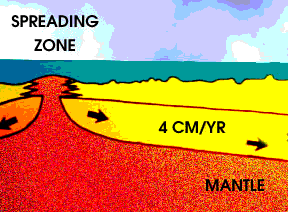This is a drawing of seafloor spreading.
Click on image for full size
Image copyright 1997 by the American Geophysical Union. Further electronic distribution is not allowed.
Mid-Ocean Spreading Ridge
As the Earth cools, hot material from the deep interior rises to the surface. Hot material is depicted in red in this drawing, under an ocean shown in blue green.
The hotter material elevates the nearby layers, and the cooler, denser lithosphere (in yellow in the drawing) slides away from the elevated region. The drawing shows that the cool crust slides at a rate of about 4 cm per year. The elevated region where new material is coming forth is called a "spreading ridge". Most of the spreading ridges of today are to be found in the central portion of the world's oceans.
The large version of this drawing shows a spreading ridge at the left and a slab of lithosphere being subducted at the bottom right. Near the subducting slab, remelting, and volcano formation are taking place.
You might also be interested in:
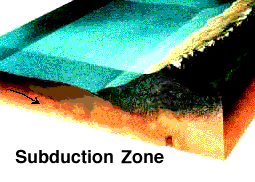
When two sections of the Earth's crust collide, one slab of crust can be forced back down into the deeper regions of the Earth, as shown in this diagram. This process is called subduction. The slab that
...more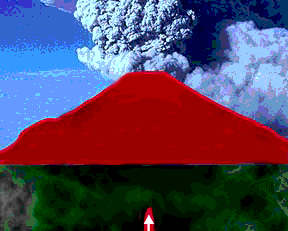
Volcanoes form when hot material from below risesand leaks into the crust. This hot material, called magma, comes either from a melt of subducted crustal material, and which is light and buoyant after
...more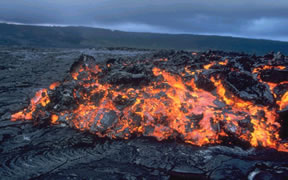
Basalt is an extrusive igneous rock that is very dark in color. It is the most common type of rock in the Earth's crust and it makes up most of the ocean floor. It is made of many dark colored minerals
...more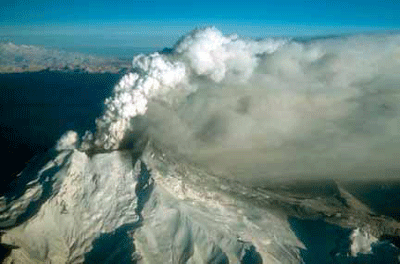
Ash is made of millions of tiny fragments of rock and glass formed during a volcanic eruption. Volcanic ash particles are less than 2 mm in size and can be much smaller. Volcanic ash forms in several ways
...more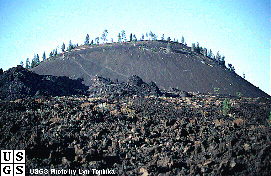
Cinder cones are simple volcanoes which have a bowl-shaped crater at the summit and only grow to about a thousand feet, the size of a hill. They usually are created of eruptions from a single opening,
...more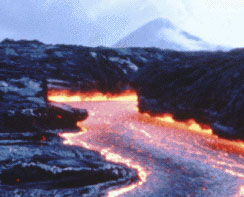
Lava can move in broad flat lava flows, or it can move through tight channels or tubes. Lava flows tend to cool quickly and flow slowly. The fastest lava outside of channels moves at about 6 mi/hr an easy
...more
Plates at our planet’s surface move because of the intense heat in the Earth’s core that causes molten rock in the mantle layer to move. It moves in a pattern called a convection cell that forms when
...more


